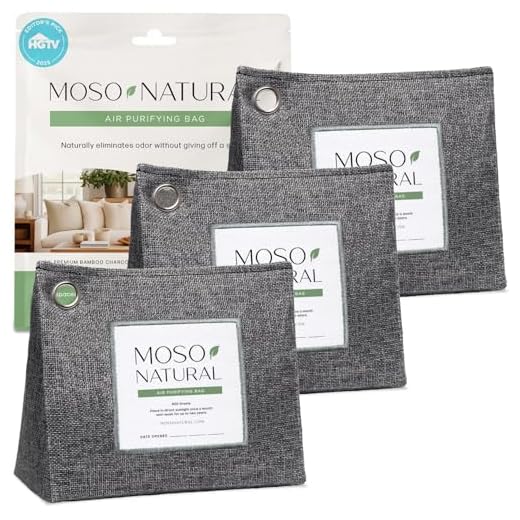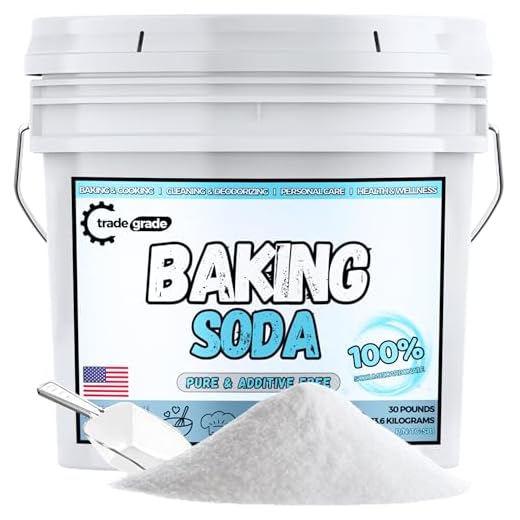







Applying a solution of white vinegar and water creates an efficient method for addressing unwanted odors in travel cases. Mix equal parts of vinegar and water in a spray bottle, lightly mist the interior surfaces, and allow it to air dry. The acetic acid in vinegar neutralizes the source of the unpleasant aroma without leaving behind any residues.
Placing activated charcoal or baking soda within the confines of the bag serves as another powerful approach. These substances absorb moisture and odors effectively. Seal the bag with the charcoal or baking soda for several days, then vacuum or shake it out to remove any residues. This technique is particularly helpful for persistent smells.
Regularly airing out the bag by leaving it open in a well-ventilated area can also be beneficial. Sunlight, when available, assists in eliminating lingering odors, while fresh air circulation helps refresh the materials. Perform this process after returning from trips or during long periods of non-use.
Eliminating Unpleasant Odors from Travel Cases

Vinegar serves as an excellent natural deodorizer. Mix equal parts of white vinegar and water in a spray bottle, lightly mist the interior, then allow it to air dry thoroughly. For persistent odors, place a bowl of vinegar inside the case overnight.
Baking soda absorbs unwanted scents effectively. Sprinkle a generous amount inside the compartments and leave it for 24 hours. Afterward, vacuum or shake out the excess. For added potency, consider combining baking soda with essential oils like lavender or tea tree.
Coffee grounds are another natural alternative for odor elimination. Fill a small container with dry coffee grounds, and place it within the case for a few days. This method not only neutralizes unpleasant odors but also infuses a pleasant aroma.
Activated charcoal works wonders as well. Place pouches or bags of activated charcoal inside the travel case. This substance will draw out the moisture and unpleasant odors, revitalizing the freshness of the interior.
For long-term freshness, consider utilizing moisture-absorbing packets or silica gel sachets. These can be easily found online and are essential for preventing future odor issues.
| Method | Instructions |
|---|---|
| Vinegar | Mix equal parts with water, spray interior, air dry. |
| Baking Soda | Sprinkle generously, leave for 24 hours, vacuum out. |
| Coffee Grounds | Fill a container, place inside for a few days. |
| Activated Charcoal | Use pouches, place inside to absorb odors. |
| Moisture Absorbers | Include packets or sachets to prevent future issues. |
For outdoor enthusiasts, pairing travel accessories with a best military waist pack ensures organization while keeping essentials close at hand. Additionally, a best heavy duty golf umbrella offers protection against unexpected weather conditions, enhancing the overall travel experience.
Identifying the Source of the Musty Odor
Begin by inspecting the interior, checking side pockets, and compartments for damp items. Remove all contents to facilitate a thorough examination.
- Examine fabric linings and seams. These areas can trap moisture, leading to odors.
- Look for any signs of mildew or mold on the material. Discoloration may indicate growth.
- Inspect zippers and hardware for corrosion. This can also contribute to unpleasant aromas.
- Check for water damage, particularly in bags that have been exposed to heavy rains or spills.
Consider the environment in which the bag was stored. High humidity or damp areas are prime culprits for odor retention.
- Remove any stored toiletries or cosmetics; these can leak and leave residual scents.
- Analyze previous uses. Frequent exposure to food, sweat, or gym gear can leave lingering traces.
- Take notice of the materials used in the construction. Certain fabrics retain moisture more than others.
A systematic approach to identifying problem areas leads to more effective treatment plans for restoring freshness.
Cleaning the Interior with Household Products
Vinegar is effective for eliminating odors. Mix equal parts of water and white vinegar in a spray bottle. Lightly mist the interior surfaces, ensuring not to saturate the fabric. Wipe down with a soft cloth after a few minutes to prevent any residue.
Baking soda serves as a neutralizing agent. Sprinkle a generous amount inside for several hours or overnight. Vacuum thoroughly to remove residue–this absorbs unwanted fragrances effectively.
Activated charcoal is another excellent option. Place a few bags or bowls of charcoal in the compartments and seal the luggage for a couple of days. This method traps lingering scents efficiently.
Essential oils can infuse a pleasant aroma. Combine a few drops of oils such as lavender or tea tree with water in a spray bottle. Lightly apply to fabrics and let it air out. This not only masks unpleasant odors but also adds a touch of freshness.
Dryer sheets can provide a quick fix. Tuck a couple into pockets or compartments. Their scent will help cover any residual unpleasantness and leave a nice fragrance.
Using Baking Soda for Odor Neutralization
Sprinkling a generous amount of baking soda inside the bag effectively combats unpleasant odors. Allow the powder to sit for at least 24 hours to absorb the unwanted scents thoroughly.
Steps for Application
To optimize results, follow these steps: First, ensure the interior is clean and dry. Next, distribute an even layer of baking soda throughout the compartments. For added potency, placing an open container of baking soda can enhance the deodorizing effect.
Post-Treatment Cleaning

After the designated time, vacuum the interior to remove the baking soda. If necessary, wipe down surfaces with a damp cloth to eliminate any residue, ensuring a fresh and clean environment remains.
Drying Techniques to Eliminate Remaining Moisture
Utilizing proper drying methods is critical for removing trapped moisture inside travel bags. Follow these techniques to effectively address lingering dampness:
Air Drying
- Open the suitcase and place it in a well-ventilated area. Sunshine is preferable as UV rays can help eradicate odors.
- Position the bag in such a way that all compartments are exposed. This promotes even airflow and aids in faster drying.
- Consider propping the bag open using suitable items, ensuring ample air circulation.
Dehumidifying Agents
- Employ silica gel packets or breathable moisture absorbers, placing them inside the bag. These will draw out any residual humidity.
- Activated charcoal bags can also absorb both moisture and odors. Place them inside for a few days to maximize their effects.
- Check periodically and replace agents as necessary to maintain effectiveness.
In case a thorough cleaning is also required, consider using the best car foam soap for pressure washer for an additional deep clean before drying procedures.
Temperature control matters as well; avoiding extreme heat sources like radiators or direct flames is crucial, as they can damage fabric and structure. Select a moderate environment for best results.
Preventing Musty Odors in the Future
Maintain a dry environment when storing travel bags. Ensure that bags are completely dry before placing them away. Utilize silica gel packets or activated charcoal inside the compartments to absorb moisture. These items can be easily replenished after use.
Regularly air out travel gear by leaving it open in a well-ventilated area. Implement a schedule to inspect for any signs of humidity or dampness, particularly during seasonal changes. Keeping the storage area dry and clean adds an extra layer of protection against odor development.
Consider using fabric sprays with antimicrobial properties to inhibit mold and mildew growth. Select products specifically designed for fabrics to avoid damaging materials. Additionally, storing bags with cedar blocks or lavender sachets not only imparts a pleasant scent but also acts as a natural deterrent against unwanted odors.
Limit the retention of wet items in travel gear. Rinse and dry swimsuits or towels before packing. Opt for quick-dry alternatives when possible. Following these simple habits can significantly reduce the likelihood of unpleasant aromas forming in the future.
FAQ:
What causes a musty smell in luggage?
A musty smell in luggage typically arises from moisture, mold, or mildew that develop in enclosed spaces. This can occur if the luggage has been stored in a damp environment or if items inside were not completely dry when packed away. Organic materials such as fabric and leather are particularly prone to absorbing moisture and developing odors over time.
Can I use baking soda to remove the musty smell from my suitcase?
Yes, baking soda is an excellent option for neutralizing odors. To use it, take a generous amount of baking soda and sprinkle it inside your luggage. Close the suitcase and let it sit for several hours, or preferably overnight. This will allow the baking soda to absorb the musty smell. Afterward, simply vacuum or shake out the baking soda, and your luggage should smell fresher.
Are there any home remedies for eliminating musty odors from luggage?
Several home remedies can help eliminate musty odors from luggage. Aside from baking soda, you can use white vinegar or activated charcoal. For vinegar, mix equal parts of water and vinegar in a spray bottle and lightly mist the interior of the luggage, then let it air out. Activated charcoal can also be placed inside the luggage for a few days to absorb smells. Both options are natural and safe for most materials.
How can I prevent musty smells from developing in my luggage in the future?
To prevent musty smells, ensure your luggage is completely dry before storing it. Avoid keeping damp clothes or wet items inside. Consider using moisture absorbers or silica gel packs in your luggage when not in use. Additionally, storing your luggage in a cool, dry place can help deter mold and mildew growth.
Is it safe to wash my luggage to get rid of the smell?
Washing luggage depends on the material. Hard-shell suitcases can usually be wiped down with a damp cloth and mild soap, while fabric luggage may be machine washable if the care instructions allow. However, it is essential to avoid soaking or submerging the luggage in water, as this may damage its structure or cause further odor issues. Always check the manufacturer’s guidelines before attempting to clean your luggage with water.










